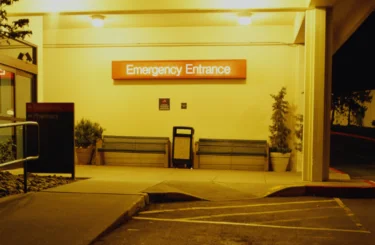
Stroke Diagnosis and Treatment Errors: Time Is Not on Your Side
In old movies, a patient complaining to their doctor about a headache might get the cliché instruction, “take two aspirin and call me in the morning.” But in real life, many people with a headache, dizziness, weakness on one side of their body or difficulty speaking may suffer from a condition far more serious than some momentary discomfort – they are having a stroke. And waiting mere hours before treating the condition – much less until the morning – can prove deadly.
Tragically, however, doctors fail to diagnose strokes correctly with alarming frequency. An incorrect, missed, or delayed stroke diagnosis can have devastating, life-threatening consequences that could have been avoided if the physician had quickly and correctly diagnosed the emergency.
Strokes Are Common. So Are Stroke Diagnostic and Treatment Errors.
According to the Centers for Disease Control and Prevention (CDC), more than 795,000 Americans have a stroke each year, and 137,000 die as a result. That means someone in the U.S. has a stroke every 40 seconds, and someone dies from a stroke every 3.5 minutes. Here in Michigan, stroke is the fifth leading cause of death, killing 5,874 Michiganders in 2020 alone.
With stroke being such a common cause of hospitalization, disability, and death, one would presume doctors would be on high alert for stroke symptoms, and misdiagnoses would be less frequent. Unfortunately, stroke diagnosis errors are among the most common diagnostic mistakes physicians make, especially in emergency rooms, where about one in 10 stroke cases are misdiagnosed.
Numerous studies have found high rates of stroke misdiagnosis. A 2017 study found that stroke is the fourth most common diagnostic error reported by physicians, with up to 12.7% of hospital stroke admissions initially misdiagnosed.
Why Are Strokes Misdiagnosed?
In many cases, a patient’s mild, common, and non-specific symptoms, such as a headache, vertigo, or inability to correctly answer basic questions, prompt a different diagnosis. In others, conditions that mimic the symptoms of a stroke, such as slurred speech or numbness of the face, arm, or leg, are mischaracterized. Whatever the reason, such diagnostic errors can have severe health consequences for patients.
Other reasons for a missed or delayed stroke diagnosis include:
- Failure to take a complete medical history.
- Failure to perform a thorough physical exam.
- Failure to order necessary tests.
- Laboratory mistakes.
- Improper test analysis.
- Failure to consider stroke in younger patients.
- Failure to recognize stroke in patients who appear healthy.
- Failure to timely consult neurological specialists.
Time Is Brain: Prompt Diagnosis and Treatment Is Essential for Stroke Survival
Physicians often use the phrase “time is brain” to emphasize the importance of prompt treatment when experiencing a stroke. Every second a stroke progresses is a second that causes damage to the brain. The sooner treatmetn is started, the greater the chances of the brain recovering from a stroke.
Quick treatment is also critical for preventing death and minimizing a stroke’s other effects. According to the CDC, patients who arrive at the emergency room and receive proper treatment for stroke within three hours of their first symptoms often suffer less disability three months after a stroke than those whose care was delayed.
Timely diagnosis is also vital because some stroke medications are only effective if administered within a window of four and a half hours of a stroke. For example, a clot-busting drug known as a tissue plasminogen activator (or Alteplase IV r-tPA) can dramatically reduce damage from an ischemic stroke if given within four and a half-hours of when the patient is last known normal. If more than four and a half hours has passed since the symptoms started, the medication cannot be used.
Unfortunately, sometimes doctors do a poor job of determining when the patient was last known normal or are hesitant to give the brain saving medication. If you had a stroke and went to the hospital within four and a half hours of the start of symptoms, and did not get the clot busting medication, tPA, you should contact a lawyer.
F.A.S.T: Identifying Symptoms of a Stroke
Given the importance of immediate medical attention, recognizing the early symptoms of a stroke is critical. The American Stroke Association uses the acronym “F.A.S.T.” as an aid to identifying stroke warning signs:
- F = Face Drooping – Does one side of the face droop or is it numb? Ask the person to smile. Is the person’s smile uneven?
- A = Arm Weakness – Is one arm weak or numb? Ask the person to raise both arms. Does one arm drift downward?
- S = Speech Difficulty – Is speech slurred?
- T = Time to call 911
Speak With a Michigan Medical Malpractice Lawyer Today
If you or a loved one has suffered because of a stroke diagnosis error or a failure to treat a stroke that was diagnosed, you are clearly not alone. Stroke misdiagnosis and failure to treat stroke is all too common and preventable, but it can often be difficult for patients or their families to recognize such errors. This is where experienced medical malpractice lawyers can help. If you believe a missed or delayed stroke diagnosis caused you or a family member harm, the medical malpractice lawyers of Sommers Schwartz can thoroughly investigate the situation, uncover the truth, and pursue compensation for your losses.
Please contact the attorneys in Sommers Schwartz’s Medical Malpractice Litigation Group for a free consultation to review your case.
Matthew Turner
Matthew Turner is a shareholder with Sommers Schwartz, and focuses his practice on medical malpractice, legal malpractice, ERISA, and class action matters.





